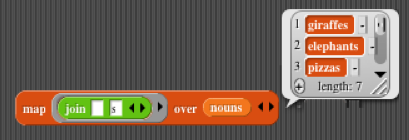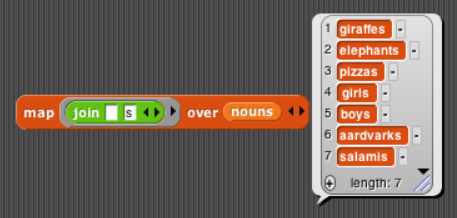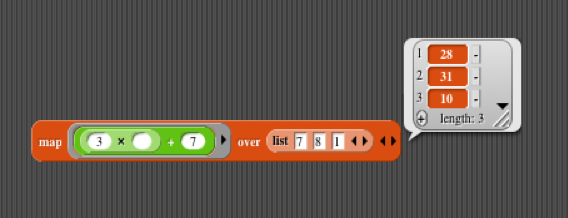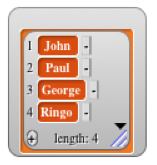In the last activity we made this list of nouns:

In the last activity we made this list of nouns:


Snap! limits the size of list displays in speech balloons, so you only see the first three items of the result in this picture, but you can tell by the vertical slider and the "length: 7" that all seven elements are really in the result. If you want to see them all, drag down the bottom right corner of the list.

The first input to the map block has a form you haven't seen before this:

The grey ring means that the input should be a function. What we mean by this is basically the same thing as the f(x)=3x+7 kind of function in algebra, except that it doesn't have to be a numeric function. In this case the function we want is "join the letter 's' after the given word." When you drag the join block into the map input slot, the grey ring is still visible, to remind you that the input is a function, not the word that you'd get from some particular joining.
Instead of using a variable, like the x in f(x), to represent the input to the function, we leave one of join's input slots as an empty box. This is supposed to remind you of the notation 3×☐+7 ("three times box plus seven") that you learned for functions in elementary school before you knew about variables.
Try this: Modify your noun phrase block so that half the time it uses a plural noun. Note that, if you use a plural noun, the article has to be "the," rather than "a."
Here are some more examples of using map to compute some function of every item of a list:



In that third example, there are two empty boxes in the function, so it's ☐×☐, which squares each number.
Try this:
In the last activity we made a list of Beatles:

map and this list to get a list of just the first names of the Beatles.
A function that, like map, takes another function as an input is called a higher order function. In the next two activities you'll meet two more higher order functions.